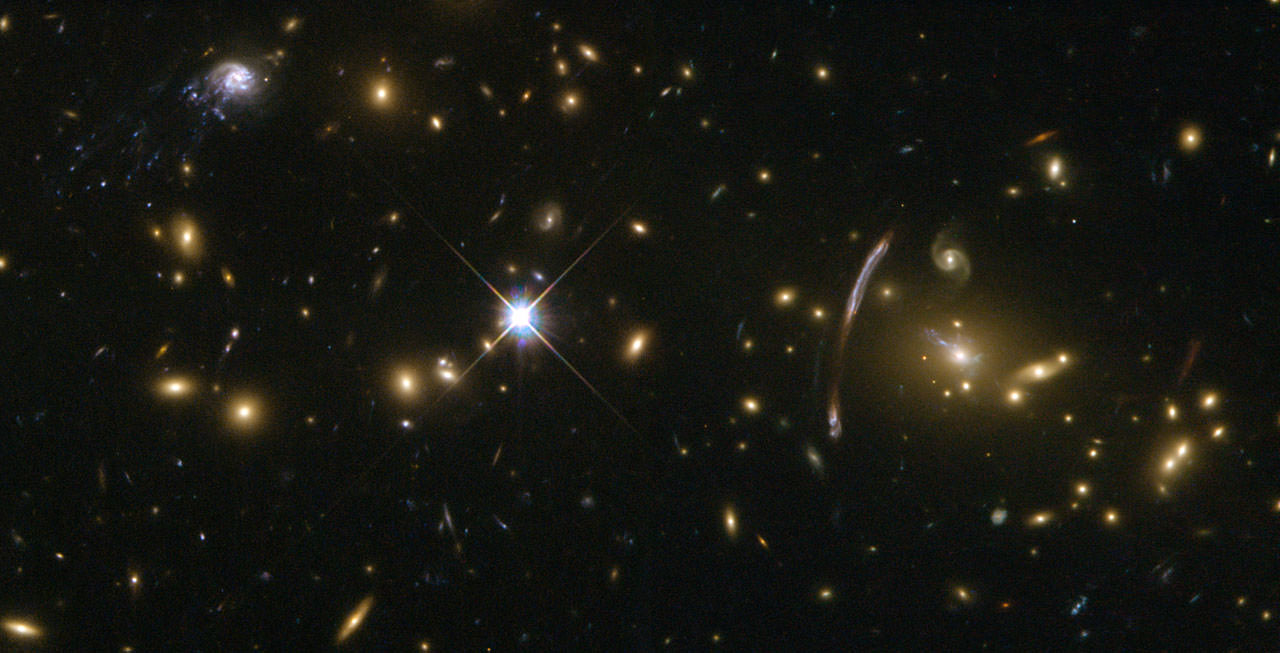[/caption]
The “Comet Galaxy” is actually just one galaxy located in a distant galaxy cluster known as Abell 2667, located about 3.2 billion light-years away. A recent photograph captured by the Hubble Space Telescope showed this galaxy being torn apart into a comet shape by the intense gravity of galaxy cluster – and that’s how it got the nickname as the Comet Galaxy.
The observation of the Comet Galaxy and the rest of the galaxies in Abell 2667 helped astronomers understand why many galaxies are “gas poor”. Our own Milky Way has tremendous stores of gas and dust which are used for star formation. But other galaxies out there have very little gas which can be used for star formation.
The image of the Comet Galaxy by Hubble helped show that huge gravitational interactions between galaxies in massive clusters cause tremendous damage to the structure of a galaxy, and the amount of gas they have. Galaxies near the center of clusters experience the most damage of all, which galaxies at the outskirts are relatively unharmed. The galaxy collisions can distort the shape of galaxies, and even fling out “homeless stars” into intergalactic space.
Even though the Comet Galaxy’s mass is slightly greater than the Milky Way, it will lose all its gas and dust, and so not be able to generate stars later in life. It will become a gas-poor galaxy with an old population of red stars.
Because the Comet Galaxy is 3.2 billion light-years away, it can only really be seen with the Hubble Space Telescope. Even a powerful backyard telescope wouldn’t be able to locate it.
We have written many articles about galaxies for Universe Today. Here’s a news release from the Hubble Space Telescope about the Comet Galaxy.
If you’d like more info on galaxies, check out Hubblesite’s News Releases on Galaxies, and here’s NASA’s Science Page on Galaxies.
We have also recorded an episode of Astronomy Cast about galaxies – Episode 97: Galaxies.

